Setenil de las Bodegas is famous for its cave dwellings in Cadiz province, Andalucia
By Nick Nutter | Updated 30 Nov 2023 | Cádiz | Villages |
Login to add to YOUR Favourites or Read Later
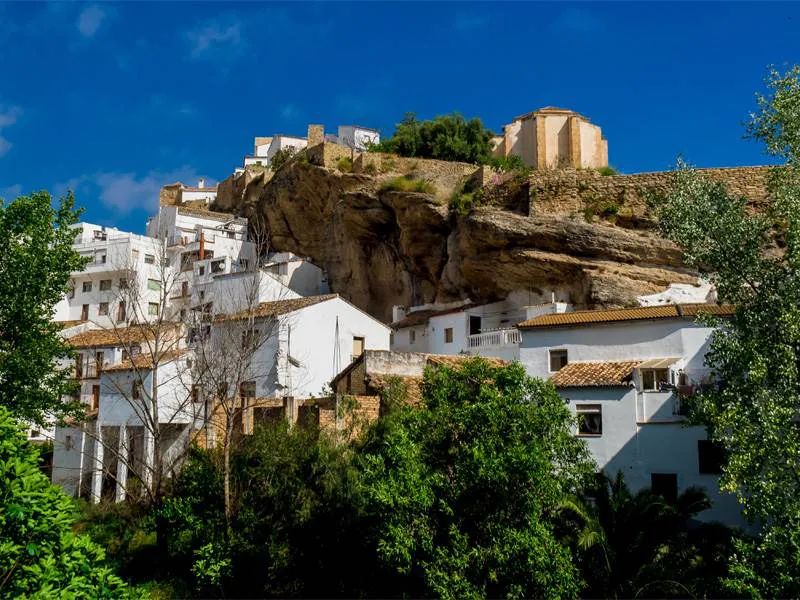
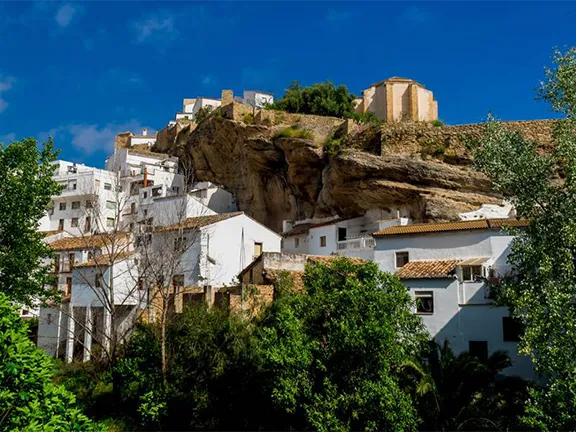
Ten kilometres north of Ronda, in the furthest reaches of Cadiz province, the Rio Trejo has, over the millennia, carved a deep gorge out of the soft sandstone. At some point in the past, the river had far more water in it than it has today and the increased flow carved out balconies on the outside curves causing the rock to loom ominously above.
These natural cave shelters were a magnet for early humans in the area. By the time the Romans arrived, the inhabitants had started to carve out their own deeper caves to make individual dwellings.


The Moors took over the area and built the, now ruined, castle that dominates the town that nowadays flows like the river from the top of the gorge and down the gorge itself.
The dazzling white houses at the top of the town cling to a steep hill below the castle while those through the canyon project from the cliff, overshadowed by a huge ‘brow’ of rock. It’s a fascinating town built with donkeys and pedestrians in mind rather than vehicles. The road that circles Setenil, apart from providing panoramic views of the area, also provides some parking.
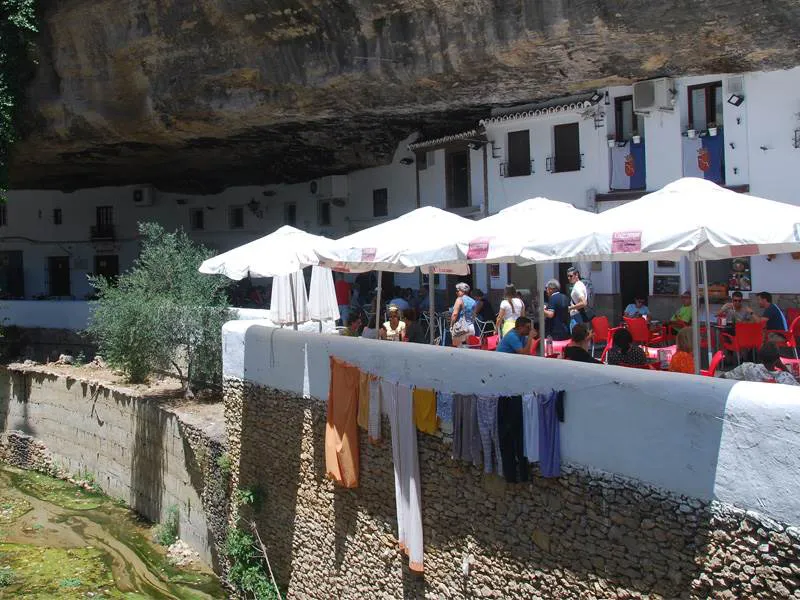
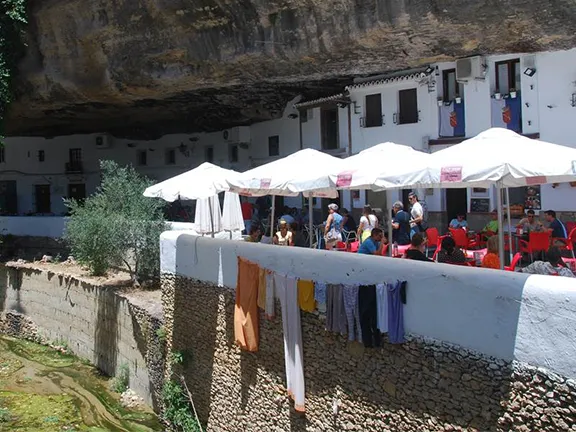
The Christian forces found Setenil a hard nut to crack. Their tactics included an early use of cannon and gunpowder. A local story insists that Isabella of Castile miscarried a child during the 15-day siege of this strategically important town. The child was called Sebastian and the Ermita of San Sebastian was built in tribute to him.
There is no historical basis for this story, but there is the Ermita, situated on the south-west edge of the town, that can be visited.

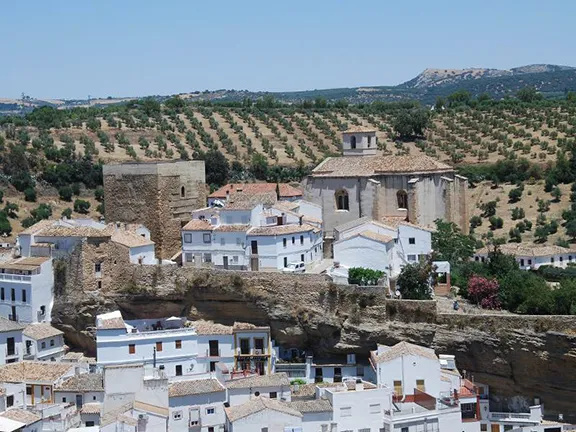
Setenil de las Bodegas would probably have remained a small settlement of almond growing troglodytes after the Christian reconquest of the area in 1484 if the grapevine and olive had not been introduced to the agricultural mix.


The grape did very well on the sandstone, limestone, strata and several bodegas were established. These were wiped out after the phylloxera outbreak in the 1860s but not before the reputation of the wine had spread and Setenil had gained its sobriquet of ‘de las Bodegas’.
Only one bodega remains today, the Bodega Las Monjas, which was once a nunnery. The red wine produced here is called ‘Principe Alfonso’, named after the late Principe Alfonso de Hohenlohe, who is more famous for his creation of the Marbella Club in the early 1950s. Look for the sign to the bodega on the left a couple of kilometres back down the road to Ronda.
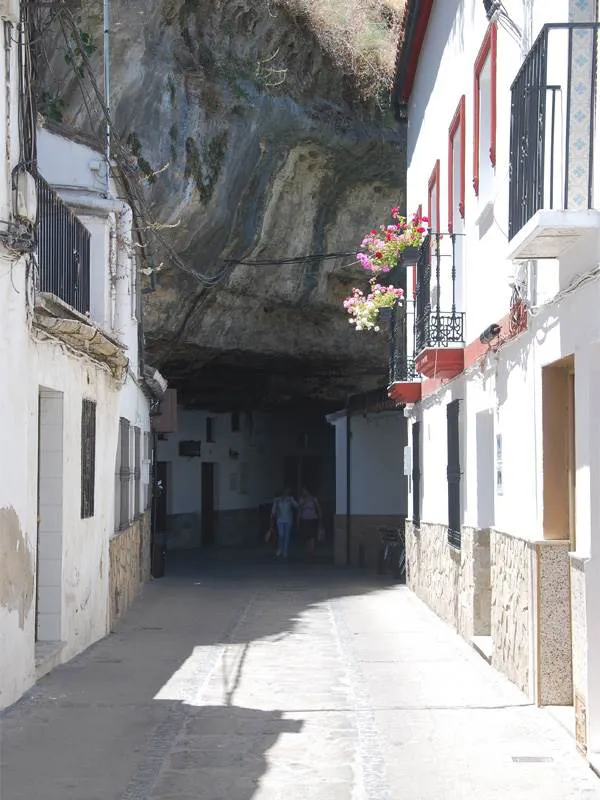

Setenil is just one of the towns in Andalucia that has gained a reputation for its pork products, particularly chorizo.
These spicy, meaty sausages, are served in all the restaurants and cafes along with equally notable pastries. Many visitors get no further than the bottom of the town where, on the aptly named Calle Cuevas del Sol, a row of cafes and restaurants snuggle into the cliff on a bend in the river with a massive overhang of rock providing shelter and shade.
For the more energetic, a walk up into the older part of town reveals houses, often adorned with brilliantly flowering planters, cut into the cliffs, steep, narrow streets, often with steps, that all seem to lead into the minuscule Plaza de Andalucia and a well-earned tubo of cerveza at one of the four bars.
At the top of the plaza is the tourist office and high above, the ruined castle the Torreon del Homenaje.
Setenil is best visited with a car (you can compare car rental prices in Andalucia here) and you can often pair it with other white villages to create your own personalised tour. For instance, from Seville, you can visit Olvera, Setenil and Ronda on a day trip.
If you do drive to Setenil, note that it's best to part outside of the village itself as the interior roads are notoriously narrow and hard to navigate for non-residents.
There's also the option to visit Setenil as part of a guided tour. Here are some options to consider:
While most people visit Setenil on a day trip, you may want to consider staying overnight to experience the village in a different way or if you want to hike in the surrounding area. You’ll have the village all to yourself once all the day-trippers leave, ensuring a peaceful and serene stay.
What’s more, many of the accommodations in Setenil are set in their iconic “cave houses”, making for an unforgettable stay!
Here are a few accommodation options to consider:
Or check out the latest deals in Setenil below.
Booking.com
Travelling to/around Spain and need some help? Here are our favourite travel resources.
We usually use Booking.com to look for hotels or apartment rentals. Lots of choice & you can unlock more discounts with their Genius loyalty programme!
To research transportation options around Spain, we like using Omio. It’s an easy way to compare different modes of transport and prices in one place.
For last-minute holiday deals, check out Expedia UK.
Looking for things to do? Viator has a huge catalog of activities and tours across many cities in Spain. We also love Get Your Guide!
Guruwalk is our favourite platform to find the best free walking tours in a city.
For money transfers or spending overseas in foreign currency, Wise is our favorite borderless banking service.
Travel insurance is a must to protect against emergencies and unexpected incidents. Get a quote from SafetyWing here.